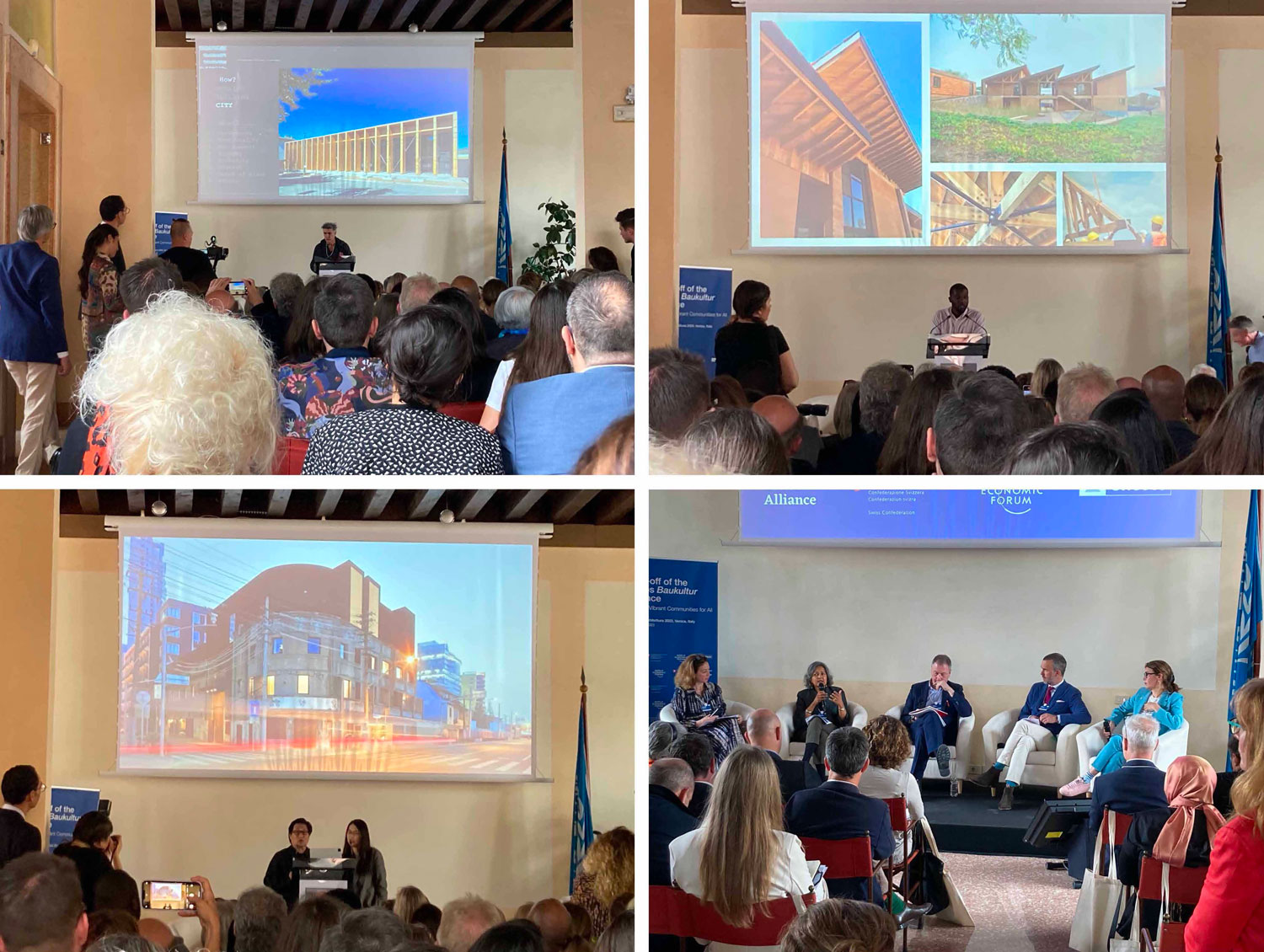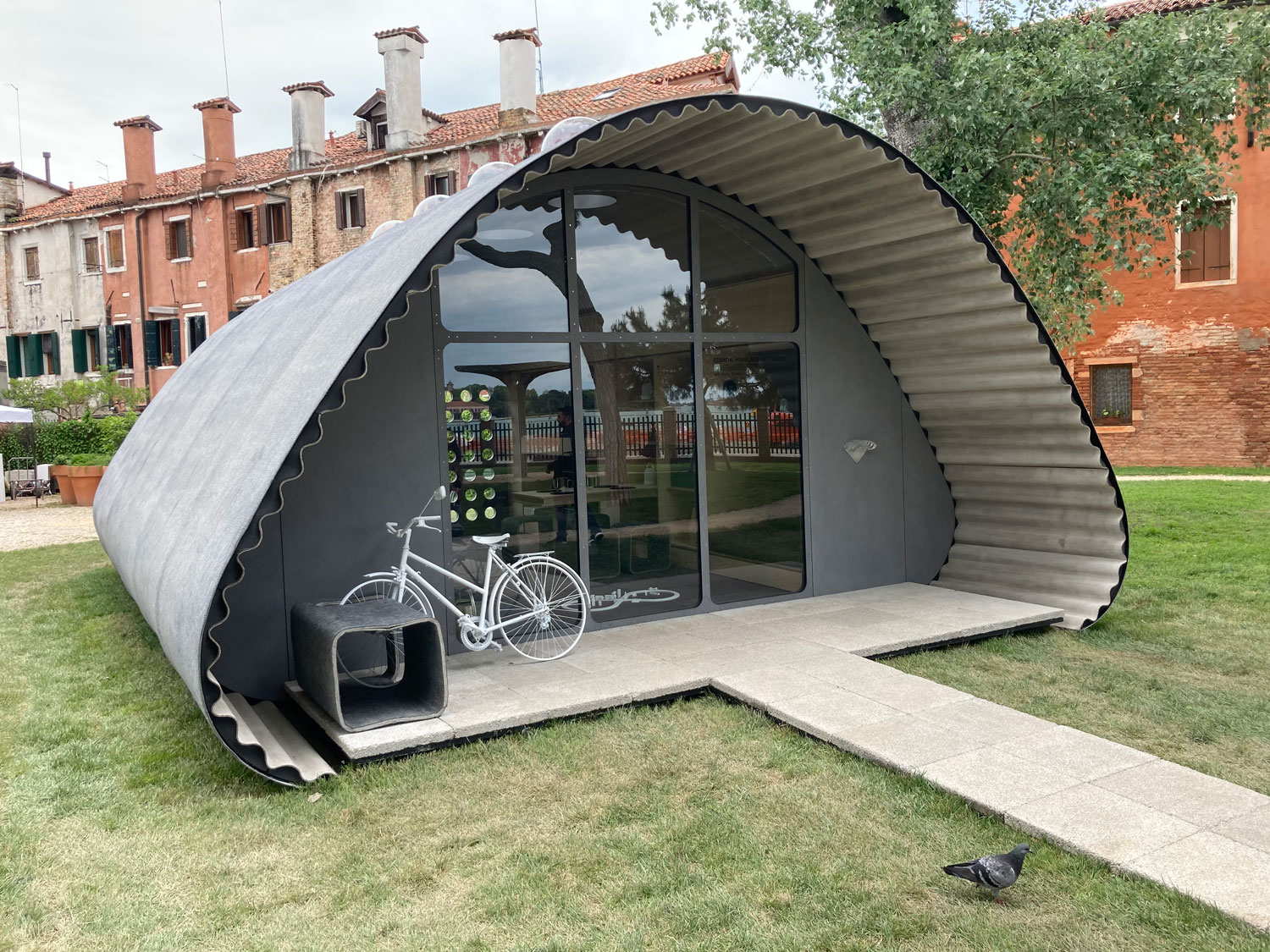Professor in Residence, Department of Architecture, GSD, Harvard University, Cambridge MA, USA
Within the framework of the 18th Venice Architecture Biennale, the Davos Alliance held its kick-off meeting in Venice on May 19 and 20, 2023. Held at Palazzo Zorzi, in the Castello neighborhood, near the Venice Arsenale, where part of the Biennale “The Laboratory of the future,” curated by Lesley Lokko, is on display till November 26, 2023,1 the symposium aimed at launching the Davos World Economic Forum (WEC) “Baukultur Alliance” initiative.2 The project, supported by the WEC, Switzerland, and other twenty-six European countries, aims at building “a multi-stakeholder global alliance dedicated to achieving high-quality Baukultur: the culture of building. The Alliance’s mission is to advance quality design and construction of more sustainable and vibrant communities.” 3
Emerged on the global discourse of architecture over the last decade, the term literally means “the culture of building.” More generally, it wants to suggest the idea of a cultural movement aimed at promoting high-quality standards, research and interventions for our habitat. Since 2005, Austria has established a “Plattform Baukulturpolitik,” while in Germany the “Bundesstiftung Baukultur” has been in place since 2007. In 2011, the Swiss Baukultur Round Table first published its “Manifesto on Baukultur,” which was an important step for the movement. In the same year, the German Federal Chamber of Architects (BAK) presented the German contribution to the 9th São Paulo International Architecture Biennial under the motto “Baukultur made in Germany.” In 2018 the WEC produced the Davos Declaration, promoted by the conference of the European Ministers of Culture, in which Baukultur… views the maintenance and preservation of cultural heritage and the comprehensive design and planning of the built environment as a single entity and which raises cultural expectations regarding the appearance of our built environment, can build on the ongoing international discussion, both in terms of cultural heritage and of current planning, design and construction, and set a new course in this respect.4
In 2021, The Plan Journal published a stimulating, multi-disciplinary conversation, with several distinguished authors, designers and thinkers, “Baukultur in a Cybernetic Age: A Conversation,” moderated by Michael Arbib.5
Day One of the kick-off meeting in Venice started with welcoming remarks by Ana Luiza M. Thompson-Flores, Director, UNESCO Liaison Office in Geneva and UNESCO Regional Bureau for Sciences and Culture in Europe (Venice, Italy), and by Alain Berset, President of the Swiss Confederation and Head of the Federal Department of Home Affairs.
The presentations were offered by well-selected leading architects and firms that distinguished themselves in researching impactful ways of sustainable, affordable and beautiful architectures, especially for communities with socio-economic challenges across the globe.
The first presenter was Chilean Pritzker Prize laureate Alejandro Aravena, who discussed renowned and more recent projects by his firm, with a particular focus on the affordable housing system and strategy called “Elemental,” already well-know and the recipient of world-wide acclaim. Even though Elemental has been well presented and disseminated (some of its design and construction documents are available on-line in open access), it was refreshing and invigorating to be reminded of the clear logic of a design concept and process able to impact so effectively and beautifully the life of people in need. Aravena framed his works by addressing a variety of issues, such as governance, functionality, environment, economy, diversity, context, sense of place, and beauty, through the scales of housing, building and city.
Then, Christian Benimana, of MASS Design Group presented works of the firm founded by Michael Murphy in 2008. The Boston firm distinguished itself for the impactful and beautiful architecture, especially in Africa, but also around the world (see my editorial “Out of the Crisis by Design” 6), priding themselves to be involved and practicing participation, from visioning, to planning, design, construction and evaluation.
Finally we heard from Lyndon Neri and Rossana Hu of Neri & Hu Design. The Chinese firm has recently arised onto the world-stage with remarkable works, awards and accolades. Pursuing a line of research close to the one of fellow Chinese architect and Pritzker Prize laureate Wang Shu, Neri & Hu are now building a portfolio of masterful architectures that, be they additions (such as the Vertical Lane House / The Waterhouse at South Bund in Shanghai) or new interventions (such as the Tsingpu Yangzhou retreat), are able to reconnect in China the strained thread tying contemporary habitat and its traditions with subtle and sustainable design solutions.
All the presentations showed a well diverse set of examples of how Baukultur may be achieved and promoted across cultures, regional contexts and design strategies.
Davos Alliance Kick-off Meeting, Venice (Italy), May 19-20, 2023. From top right, counter-clockwise: Christian Benimana (MASS Design Group), Alejandro Aravena, Lyndon Neri and Rossana Hu (Neri&Hu Design), and the panel led by Josephine Minutillo (left), including (from left to right) Jyoti Hosagrahar (UNESCO), James Middling (Mott Mac Donald), Cedric de Meeûs (Holcim) and Ruth Schagemann (Architects’ Council of Europe).
The panel discussion that followed, on Day One, was moderated by Architectural Record Editor-in-Chief Josephine Minutillo. The participants were Ruth Schagemann, President of the Architects’ Council of Europe, Jyoti Hosagrahar, Deputy Director of UNESCO World Heritage Centre, Cedric de Meeûs, Head Group Public Affairs of Holcim, and James Middling, Global Sector Leader for Build Environment for Mott Mac Donald.
Schagemann opened with remarks on the need, but also the potential, to develop a European level initiative on public housing, to address challenges posed by socio-demographic shifts and migrations across all European countries. De Meeûs discussed three priorities: the development of an ecosystem for Baukultur, the affordability of technology for every country, and the notion of leaving non-one behind. As an example, he cited Norman Foster’s shelter prototype, currently on display at the Biennale at the Marinaressa gardens. The prototype wants to propose a solution for the many displaced people around the world (today at 103 million) to have a dignified living space. The prototype is part of the Norman Foster Foundation (Spain) and Holcim “Essential Homes Research Project” which states that “the quest is to design homes rather than shelters, and to create communities instead of camps.” Middling reiterated the affordability agenda and the concept of a building “doing fewer bad thing to being truly sustainable, like a tree.”
Hosagrahar underscored the need of leveraging UNESCO role and impact to promote sustainable strategies, such as adaptation, repurposing and re-use. Schagemann noted that architects are on-board with all these commendable ideas, but we need to engage more the civil society: people understand social issues, but they have difficult times with bans and prohibitions. She mentioned the ETH-led European citizen initiative to change the building stock. Zurich was also brought up by de Meeûs for the initiative of all construction to be 30% from re-cycled materials. Schagemann suggested that we need affordable housing, but also affordable mortgages based on the “Davos points” and quality-based public procurement. Hosagrahar expanded with the notion that “it takes a village” to improve the environment and that we need to implement a multi-pronged strategy. She also reiterated that we need to engage local communities to plan “with” them, and not “at” them.
Day Two was more based on focused discussions in break-out sessions. Introduced with welcoming remarks by Oliver Martin, Head of Baukultur of the Swiss Federal Offiuce of Culture and by Jyoti Hosagrahar, the sessions dealt with three Focus Areas: affordability and social value creation, resilience and climate adaptation, and sustainability and circularity.
In Focus Area 1 on affordability and social value creation, led by Avison Young, Mott Mac Donald and Lithuania, the discussion revolved around strategies that the Alliance can pursue to incentivize and accelerate the adoption of Baukultur policies and programs within social housing and around social regeneration projects able to drive social value for communities.
In Focus Area 2 on resilience and climate adaptation, led by Estonia, Bouygues Bâtiment International and the Conference of International Non-Governmental Organisations (INGOs), the discussion focused on initiatives that can help mitigate the risks of extreme weather and natural disasters, to create more resilient communities, while in turn to advance the Baukultur movement.
In Focus Area 3, on sustainability and circularity, led by Holcim, the European Council of Spatial Planners and UN-Habitat, the participants discussed particular activities that can incentivize and promote the adoption of sustainable and circular construction models, retrofitting of buildings, and special planning to achieve net zero and nature-positive communities.
Day Two concluded the symposium with a plenary session where participants shared the ideas discussed in the focus sessions, the discussion and approval of the Alliance terms and conditions of membership and other operational issues. Oliver Martin offered the concluding remarks.
In summation, the Davos Alliance is a worthy endeavor and the kick-off meeting was a successful event in trying to build momentum for the initiative. Even though it may seem a top-down program, initiated by world organizations and governmental institutions, aims and scope of the initiative are commendable, timely and well-defined. Whatever the avenues, if we will be able, over the next years or decades, to build a strong Baukultur across the world, we will have done a great service to humanity. The multi-stakeholder approach, while perhaps complicated for the different organizational, financial and cultural modes of operation, is a good one and promises to be very effective: it takes a village to build strong communities and a sustainable, resilient, and beautiful habitat.
“Essential Homes Research Project Prototype” by the Norman Foster Foundation (Spain), in collaboration with Holcim, as part of the “Time Space Existence” exhibition, within the 2023 18th Venice Architecture Biennale, at the Marinaressa Gardens: “a first proposal of a longer term project to explore durable, comfortable and dignified homes for people in displacement.”
Davos Baukultur Alliance brochure for the kick-off meeting in Venice, Italy, May 19-20, 2023.
The Davos Declaration, 2018, p. 11 - https://baukultur--production--storage.s3.amazonaws.com/baukultur/2022-0....
Michael Arbib et al., “Baukultur in a Cybernetic Age: A Conversation,” The Plan Journal 6, no. 1 (2021): 7-28 – doi: 10.15274/tpj.2021.06.01.1.
Maurizio Sabini, “Out of the Crisis by Design,” The Plan Journal 5, no. 2 (2020): 285-87 – doi: 10.15274/tpj.2020.05.02.12.
All photos are by © the Author.


















